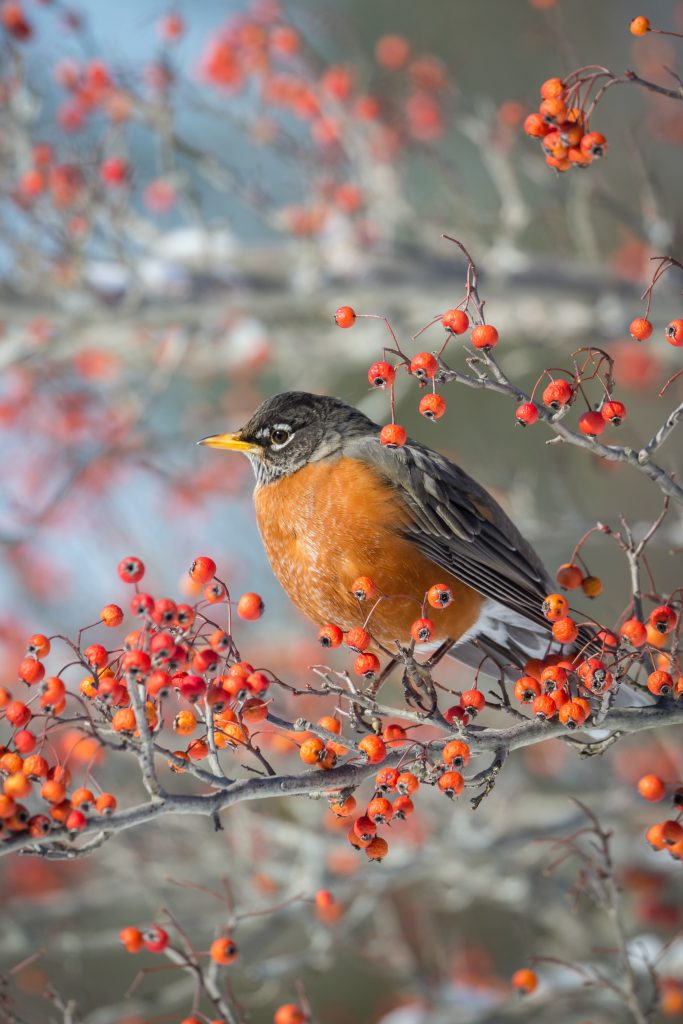
Robins brought water to relieve tormented souls in Hell and. so, got their breasts scorched; their breasts were stained with Jesus’ blood; they fanned, with their wings, the flames of a fire to keep baby Jesus warm and got scorched. The association with Christmas and Christmas cards therefore makes perfect sense.
They are the Celtic Oak King of the New Sun. The Robin is the son of the Wren. The Wren is the bird of the Old Sun, and the Robin kills his father, so the New Sun takes over from the Old Sun at the Winter Solstice.
With the birth of the new Sun, the blood of the father stains the Robin’s breast.
Robins appear when loved ones are near. If a Robin comes into your house, a death will follow. In Celtic Folklore, Robins are said to shelter in Holly trees.
They are one of the few birds to be seen all year round, and they sing all year too, but with different songs for autumn and spring. Robins sing from concealed spaces in trees or bushes. They are the first to sing in the morning, the last to stop at night, and can be triggered by street lights turning on. A Robin can sing all the notes on the scale and can sing for half an hour without repeating a melody.
They eat worms, seeds, fruits, insects and other invertebrates. Robins are aggressively territorial, and are our favourite birds. (RSPB)
